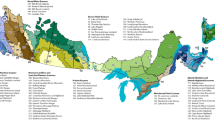Abstract
The critical habitat provision of the US Endangered Species Act was believed by many to be a key feature of the Act. It was believed that this provision would benefit federally listed endangered and threatened species. However, only 23% of the listed species in the United States have their critical habitats designated. The current trend is to forego critical habitat designation because the federal government believes that the Endangered Species Act can protect most listed species without resort to the critical habitat provision. Required publication of critical habitat locations in theFederal Register may draw vandals and collectors to rare species. In other cases, existing habitat protection already provides adequate protection for species. In a few instances critical habitat changes over time and is difficult to delineate. Lastly, designating critical habitat is time consuming, delays species listing, and is controversial, detracting from the positive image of the Endangered Species Act.
Similar content being viewed by others
Literature cited
Bean, M. J. 1983. The evolution of national wildlife law. Praeger, New York, 449 pp.
Craighead, F. C. 1979. Track of the grizzly. Sierra Club Books, San Francisco, 261 pp.
Craighead, J. J. 1985. Politically endangered.Naturalist 36(2):1–3.
Drabelle, D. 1985. The endangered species program. Pages 73–90in A. S. Eno and R. L. Di Silvestro (eds.), Audubon wildlife report 1985. National Audubon Society, New York, 671 pp.
Fosburgh, W. 1985. Wildlife and the US Forest Service. Pages 307–341in A. S. Eno and R. L. Di Silvestro (eds.), Audubon wildlife report 1985. National Audubon Society, New York, 671 pp.
Ganong, N. M. 1979. Endangered Species Act amendments of 1978: a Congressional response toTennessee Valley Authority v.Hill.Columbia Journal of Environmental Law 5:283–315.
Jacobsen, R. D. 1980. Legal aspects of critical habitat determinations. Pages 5–8in C. J. Martinka and K. L. MacArthur (eds.), Bear Biology Association conference series no. 3.
Johnson, M. K. 1979. Review of endangered species: policies and legislation.Wildlife Society Bulletin 7:79–93.
Johnson, M. K. 1984. Endangered Species Act amendments 1979 and 1982.Wildlife Society Bulletin 12:304–311.
Rosenberg, R. H. 1980. Federal protection of unique environmental interests: endangered and threatened species.North Carolina Law Review 58:491–559.
Sheppard, J. L. 1980. The evolution of endangered species management and the utility of the concept of critical habitat: a case study in the administration of wildlife policy. MS thesis, University of Michigan, Ann Arbor, Michigan, 179 pp.
Sparrowe, R. D., and H. M. Wight. 1975. Setting priorities for the endangered species program.Transactions of the North American Wildlife and Natural Resources Conference 40:142–155.
Stromberg, D. B. 1978. The Endangered Species Act amendments of 1978: a step backwards?Boston College Environmental Affairs Law Review 7:33–42.
US General Accounting Office. 1979. Endangered species: a controversial issue needing resolution. US General Accounting Office, 123 pp.
US Fish and Wildlife Service. 1983. Kauai forest birds recovery plan. US Fish and Wildlife Service, Portland, Oregon.
Weaver, J. L. 1985. Charting the course: the Forest Service grizzly bear program.Naturalist 26(2): 14–15.
Author information
Authors and Affiliations
Rights and permissions
About this article
Cite this article
Sidle, J.G. Critical habitat designation: Is it prudent?. Environmental Management 11, 429–437 (1987). https://doi.org/10.1007/BF01867651
Issue Date:
DOI: https://doi.org/10.1007/BF01867651




